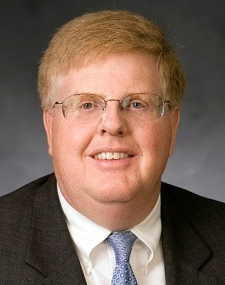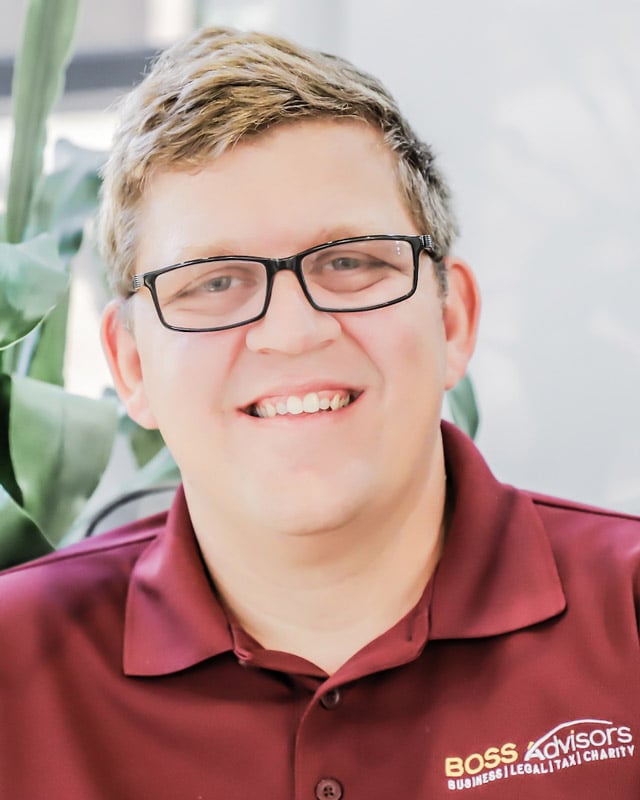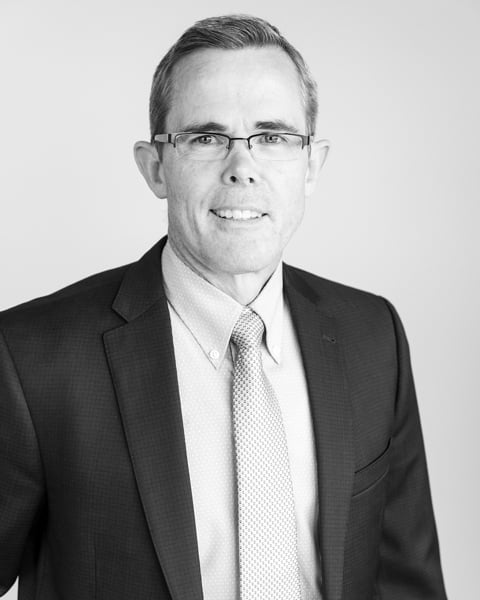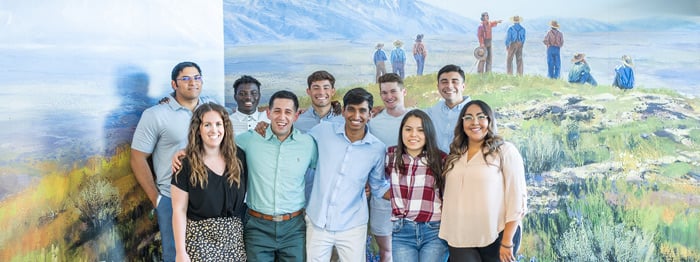Winter 2023 GPC Newsletter

 The Abundant Life
The Abundant Life
Thank you to our Gift Planning Council (GPC) members who traveled Salt Lake City or who joined us online for our 2023 conference. It is your continued support and encouragement which makes the gathering possible. It is especially wonderful to note that this was our best attended conference!
Building upon the conference theme, The Abundant Life, presenters expertly addressed cutting-edge technical issues while weaving in applicable real-life guidance on how to assist individuals and families address vital non-technical concerns. Participants received counsel on how to help their clients share their most important values and assist their children and grandchildren in acquiring essential life skills.
Representatives of the Church shared presentations on their important work. What a delight to hear from Elder D. Todd Christofferson of the Quorum of the Twelve Apostles! President Brian K. Ashton and Matt Eyring shared exciting news about BYU-Pathway Worldwide. Brother Georges Bonnet and the parallel he drew between the Salt Lake Temple renovation project and our personal lives was the highlight of Thursday’s dinner. Judge Thomas Griffith talked about his three life-changing decisions. President C. Shane Reese and Keith Vorkink provided a timely BYU update. We are also grateful to Tanise Chung-Hoon, Managing Director of Philanthropies, and our other speakers who inspired us to be better. The conference helped us to understand the “why” we participate in this effort, as well as the “how” we create by implementing the technical instruments that bring good intentions to fruition.
As we receive permission, we will place presentation recordings and materials on our website. We invite you to visit our 2023 Conference Page.
Also, while it is fresh on your mind, may I please encourage you to save the date for our next conference, two years from now, scheduled for November 13-14, 2025. We hope you can join us!
I join you in expressing deep gratitude to Stan Leavitt for his leadership as chair of the GPC. Stan’s guidance has blessed and strengthened our council. We are better because of Stan’s excellent work and the kind and thoughtful way he led. Thank you, Stan, for your continued service and professionalism.
We now warmly welcome David Grant as he begins his term of service as chair of the GPC! David has ably served the council as vice-chair. David’s enthusiasm and innovation will build on the foundation laid by Stan and the other past chairs. We are most fortunate to have David at the helm.
During this Christmas season, as we celebrate the birth of our Savior, the team at Gift Planning Services expresses our appreciation for the service you render your clients and for all you do to help promote charitable giving to the worthy causes which surround us. Thank you for emulating the example of our Savior and for your good work in blessing others.
Merry Christmas and best wishes as you prepare for the new year.
Kindest regards,
David Bonner,
Manager, Gift Planning Services, Philanthropies
 No Good Deeds
No Good Deeds
Adam Brown
This past summer, I took my family on a cross-country road trip. We love listening to musicals on our road trips, with Stephen Schwartz’s Wicked being a family favorite. One of the songs from Wicked state that “no good deed goes unpunished” and that “no act of charity goes unresented.” As I help donors and nonprofits navigate the complex rules around charitable giving, I often want to sing this song to them. People want to help, but if done incorrectly, they can cause significant harm to organizations.
One trap for the unwary is the issue of a large donation “tipping” an organization’s public charity status. Tipping occurs when a public charity fails to meet its “public support test,” and by default becomes a private foundation for tax purposes.
Public Charities vs. Private Foundations
A 501(c)(3) can be classified as either a private foundation or as a public charity. By default, a 501(c)(3) organization is classified as a private foundation unless it meets the public support test. If it meets the public support test, the organization is classified as a public charity. Most 501(c)(3) organizations want to qualify as a public charity because public charities are subject to fewer restrictions and excise taxes than a private foundation.
What is the Public Support Test?
The public support test is a complex calculation that evaluates the revenue sources of a nonprofit organization over a five-year period to ensure that the organization is supported by a broad base of donors, as opposed to a single donor or small group of donors. The general rule is that one-third (33.33%) of an organization’s total support must come from “public support.” Public support includes grants from certain public charities, government grants, and donations that aren’t considered “excessive contributions” (a contribution that exceeds two percent of the organization’s total revenue for the measurement period). Non-public support includes excessive contributions, investment income, and net income from unrelated business activities. There is a second public support test calculation which includes related program revenue in public support. (Since the general one-third rule is the same, I won’t explain the difference of this second public support test.)
How is the Public Support Test Calculated?
Example 1:
Total donations from year 1 to year 5: $100,000.
Of the $100,000 in donations, $80,000 came from small, public donations, and $20,000 came from the Organization’s founder.
In this example, the donations from the founder exceeding $2,000 (2% of $100,000) are considered “excessive contributions” because they total more than 2% of the total donations for the 5-year period, and thus are not considered “public support.” The organization’s public support would be $82,000 ($80,000+$2,000) and it would meet the public support test as its public support percentage is 82% ($82,000/$100,000).
Example 2:
Total donations from year 1 to year 5: $100,000.
All $100,000 came from 4 individuals who each donated $5,000 per year for years 1 through 5 (making total donations of $25,000 each).
In this example, $2,000 from each donor ($100,000 x 2%) is considered public support. The remaining $23,000 per donor is considered excessive contributions. The public support percentage is 8% ($8,000 / $100,000), meaning the organization would fail the public support test.
Two-Year Tipping Test
If an organization fails the public support test two years in a row, the nonpublic support will “tip” the organization from a public charity to a private foundation starting as of the first day of the second year. An organization tipping to private foundation status can have devastating tax and legal consequences for an organization if the organization is not prepared to operate within the special private foundation excise tax regime.
There are exceptions and strategies that can be utilized by donors to avoid the tipping issue. As always, this is a complex issue so working with an attorney or CPA who has experience with nonprofits is essential.
Exceptions to the Public Support Test Calculation
Exception 1: First Year Funding
The public support test calculation has some rules and exceptions that can be used to allow donors to make a large gift without triggering this tipping issue. First, because it is a two-year test, gifts made to an organization in its first tax year won’t impact the public support test. Donors can maximize donations to the new organization in year one. In year six, these donations will “fall off” the rolling five-year public support test without tipping the organization. While this seems like a simple solution, modeling the organization’s support over the first six years with your advisor is essential.
Exception 2: Facts & Circumstances Test
Another exception to the one-third public support requirement is a special “facts and circumstances” test. To qualify for this exception, the organization must demonstrate to the IRS that (1) the public support for the period was at least 10%, and (2) the facts and circumstances indicate that the organization is trying to receive public support. Favorable facts and circumstances include establishing a board of directors representative of the public, having many donors with a robust fundraising program, and showing that the organization’s services helped a broad group of people. The facts and circumstances test is an excellent option if the organization is trying to meet the public support test but fails due to unique circumstances.
Exception 3: Unusual Grants
Finally, the public support test excludes “unusual grants.” An “unusual grant” is a grant that (1) came from a disinterested donor that was attracted by the publicly supported nature of the organization, (2) is of an unusual size, and (3) would adversely affect the organization’s public support percentage because of its size. Whether a donation is an unusual grant depends on the facts and circumstances of the donation.
For example, I had a nonprofit client with total donations received of around $10 million dollars during the measurement period. Unexpectedly, the client received a $40 million donation from a celebrity. Without the unusual grant exception, this gift would have dropped the organization’s public support percentage well below the one-third threshold. Fortunately, we were able to classify this as an unusual grant, so it was entirely excluded from the public support test.
Structuring Strategies to Avoid Tipping
In addition to the opportunities that arise from the exceptions to the public support test, there are structuring strategies that can be employed to avoid the tipping issue of the public support test.
Strategy 1: Donor Advised Funds
Giving to the organization through a donor advised fund (DAF) allows a donor to support an organization without negatively impacting the public support percentage. Under current law, a gift from a DAF is considered public support for public support test purposes since the organization holding the DAF is a public charity.
Some donors who are worried about an organization’s public support percentage will give a gift to a DAF and then immediately advise the DAF to give to the organization. The IRS does not like how easy it is to work around the public support test so it announced in 2017 that it is preparing proposed regulations that would “look through” DAF gifts for public support tests and thereby attribute the gift to the original donor. These proposed regulations have not yet been released and are not law, but they reflect the IRS’s disapproving opinion of this strategy. However, under current law, this is one way to make large donations without jeopardizing an organization’s public support percentage.
Strategy 2: Other Funds
The proposed regulations mentioned above are limited to DAFs. To avoid the potential DAF regulations, a donor might want to set up a fund that intentionally avoids meeting the definition of a DAF. One way to do this is to set up a fund at a sponsoring organization that is restricted to the support of a single organization. This structure would not have as much flexibility as the DAF structure, but could be helpful if the donor wants to support a single organization without the administrative costs of creating a new entity. This option is useful in other scenarios where using a DAF does not make sense (such as when DAFs are disqualified recipients or when donations to DAFS do not qualify for higher giving thresholds).
Strategy 3: Supporting Organizations
A donor can go even further with its support of an organization by setting up a “supporting organization” with specific requirements in its bylaws to support an identified recipient organization. A supporting organization is a type of public charity that fulfills its charitable purpose by supporting another charity or charities. The rules around supporting organizations are complicated but can be a good option for donors who want to provide long-term, continued support to the recipient organization.
Supporting organizations are not required to meet the public support test to maintain their status as public charities. Thus, a donor can make a large, initial gift or continued annual gifts of any size to the supporting organization, which in turn can spread the support out over an extended time frame. This type of extended support reduces the risk of the donor negatively impacting the recipient organization’s public support test or tipping it.
Creating a supporting organization should be done with much consideration, as it is a separate legal entity that requires significant ongoing administrative support (e.g., state annual reports, financial statements, tax returns, and board governance requirements).
Takeaway
It is essential for public charities, especially small public charities, to review and analyze their public support percentages regularly. Large donors must be aware of the impact a large donation can have on a small organization. If a donor wants to make a large donation, it is always best to communicate with the recipient organization before making the gift to make sure the donation doesn’t tip the organization. With proactive planning, the donor can avoid the tipping issue and other complications and ensure their deeds are celebrated instead of causing problems. Then, maybe, I can sing my road trip songs at the top of my lungs with the windows rolled down without thinking about how they relate to charitable giving!
 Bill O. Heder Spotlight
Bill O. Heder Spotlight
Though blessed, my journey to an estate planning practice was rather indirect. Fresh out of the J. Reuben Clark law school, my first job was as a junior associate in a litigation practice. That meant I was handed the things my supervising partner didn’t want or have time for. As happens in the practice of law, the more I worked on a certain kind of case, (probate litigation) more of those cases came my way. By necessity more than choice, I became a probate litigator.
Being basically “conflict-averse,” I found myself going through an alarming quantity of antacid tablets, and taking disputed issues home with me (both literally and figuratively). But as difficult as those litigation years were for me, they were valuable, because I learned the back side of poor estate planning. Most of the disputes I was thrown into arose from an ambiguous (or missing) provision of a trust or will, or from a well-drafted estate plan that was never properly funded.
Eventually my discontent led me through several different firms in search of a better fit, and to a phone call with Paul MacArthur, a law school classmate. I then joined him in a sparsely furnished office space in Provo, Utah where we hung out a new shingle, hired a part time receptionist/secretary, and ate frozen Costco burritos from our mini fridge for lunch. His tax training and my litigation experience were all we had as we set out to build a transactional practice that would eventually become MacArthur, Heder & Metler, PLLC. We were aided in that effort by the generous mentoring of several experienced estate and financial planners who continue to be our friends and heroes after two decades of growth.
The part of estate planning that appeals most to me is the people; both the professionals I get to associate with, and the clients whose stories now fill my workday. Believing that a fundamental purpose for this life is found in the human friction that affords an opportunity to bear one another’s burdens, I find estate planning—particularly where it intersects with planned giving—to be an arena filled with people engaged in a vital ministry.
Paul and I have both served on the Gift Planning Counsel and have been attending Philanthropies functions for many years now. We benefit from associating with the amazing people working in Philanthropies and from the insights we gain from those who attend and present at the conferences. Some of my most rewarding estate planning experiences have come when I introduced clients to Philanthropies as an answer to the question of how to help ensure that the client’s estate will be a blessing, rather than a burden, to their family and others.
Ensign College

Ensign College awards scholarships to reward those who have excelled in high school, served missions, and to help those who need financial assistance to attend college. This fund is generally used to support internships, leadership, missionary service, international students, and PathwayConnect graduates. Students maintain their scholarships based on academic performance and adherence to the honor code.
Without scholarships, many could not attend college. As Church membership increases, many more will want a college education. Elder Henry B. Eyring explained the connection: "The change that comes is a desire to be someone even better, to reach for more light, and to give greater service to others. Those desires always lead to a hunger for education, to learn what is true, what is useful, and what is beautiful."
The dramatic increase in the number of young men and women joining the Church has helped fuel a significant increase in enrollment at the College. Students from more than 50 countries and from every state in the nation hope to receive the skills-based education offered at the College. In addition, the spiritual atmosphere attracts students of character who wish to learn in an environment that promotes faith in the Lord and a love for His gospel. Enrollments have reached record highs and will continue to grow throughout the decade. Scholarships are an essential part in the educational process and your help is needed to make that education available to more students.
Visits with Gift Planning Services
As we travel, Gift Planning Services (GPS) loves visiting with our GPC friends. This gives us a chance to get to know you better, share information about Philanthropies, and discuss what complimentary services GPS offers to you and your clients. If you would like a brief visit with a GPS team member, either in-person or virtually, please let David Smith know at (801) 356-5251 or davidj_smith@churchofjesuschrist.org.
Did You Know?

Did you know how easy it is to register a will, trust, annuity, or insurance policy notifying us that you or someone you work with has named The Church of Jesus Christ of Latter-day Saints or one of its affiliated charities as a beneficiary?
We've created a very simple process for this on our website.
PS: Don’t forget to add giftplanning@ChurchofJesusChrist.org to your safe senders list.
PPS: If you have friends or colleagues who you think would benefit from receiving this newsletter or other Gift Planning Council correspondence, please contact David Smith at davidj_smith@ChurchofJesusChrist.org or 801-356-5251.
Contact Us
For a detailed discussion of the services we provide you and your advisors, please contact us at 1-877-650-5377 or by email.